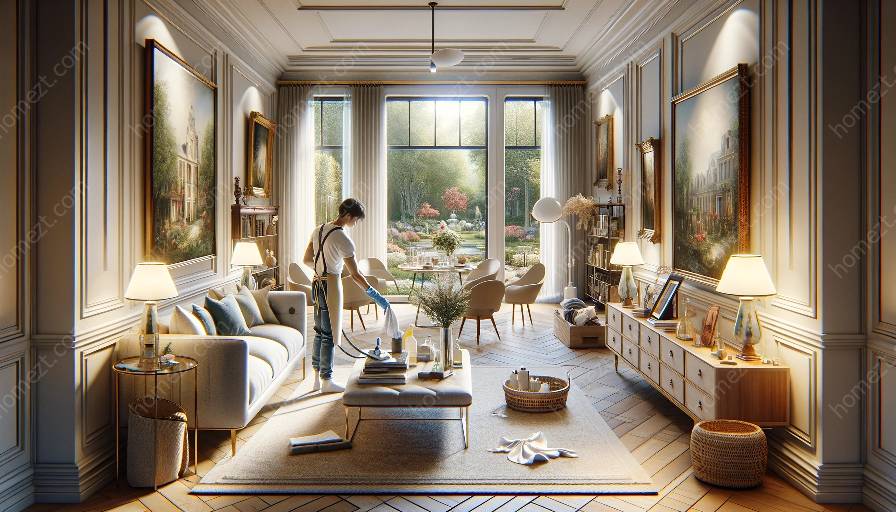In this comprehensive guide, we will delve into the critical role of environmental conditions in the preservation of art and collectibles. We will also explore effective cleaning techniques for art and collectibles, and understand how to integrate home cleansing techniques for optimal care.
Understanding the Role of Environmental Conditions
Environmental conditions play a paramount role in the preservation of art and collectibles. Factors such as temperature, humidity, and light exposure can significantly impact the integrity of these valuable items. Let's take a closer look at these environmental factors and their effects.
Temperature
The temperature of the environment where art and collectibles are displayed or stored can greatly influence their preservation. Extreme temperatures can cause materials to expand and contract, leading to structural damage. Ideally, the temperature should be maintained within a narrow range to prevent such damage.
Humidity
Humidity levels can have a substantial impact on the condition of art and collectibles. High humidity can result in mold growth, while low humidity can cause materials to become brittle. Proper humidity control is essential to safeguard these items.
Light Exposure
Light exposure is another crucial factor to consider. Ultraviolet (UV) radiation from sunlight and artificial lighting can cause irreversible damage to paintings, photographs, and other delicate collectibles. Implementing UV filtering and limiting exposure can help mitigate these effects.
Effective Cleaning Techniques
Regular cleaning is essential for the maintenance of art and collectibles. However, improper cleaning methods can inadvertently cause harm. Here are some effective cleaning techniques to preserve these valuable items:
- Gentle Dusting: Using soft, non-abrasive cloths or brushes to gently remove dust from surfaces can prevent scratches and abrasions.
- Conservation Vacuuming: Employing specialized conservation vacuum cleaners with adjustable suction levels can safely remove dust and debris from delicate items.
- Professional Restoration: When dealing with particularly valuable or intricate pieces, entrusting the cleaning and restoration process to professional conservators is highly recommended.
Integration of Home Cleansing Techniques
Implementing effective home cleansing techniques is integral to the overall care and preservation of art and collectibles. By maintaining a clean and well-maintained environment, you can significantly contribute to the long-term protection of your valued items.
Avoid Harsh Chemicals
When cleaning or dusting collectibles at home, it's crucial to avoid harsh chemicals or cleaning agents. These substances can cause irreversible damage, especially to delicate surfaces and materials. Opt for gentle, non-toxic cleaning solutions instead.
Regular Inspections
Regularly inspecting your art and collectibles is essential to detect any signs of deterioration or damage. By identifying issues early on, you can take prompt action to address them and prevent further degradation.
Optimal Display and Storage
Proper display and storage are pivotal aspects of home cleansing techniques for art and collectibles. Utilize archival-quality materials, maintain stable environmental conditions, and avoid direct sunlight exposure to safeguard your valuable items.
By understanding the role of environmental conditions, integrating effective cleaning techniques, and incorporating home cleansing practices, you can ensure the long-term preservation of your art and collectibles.


